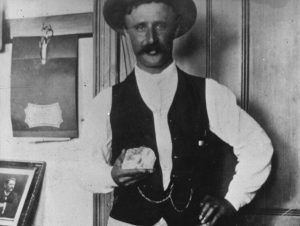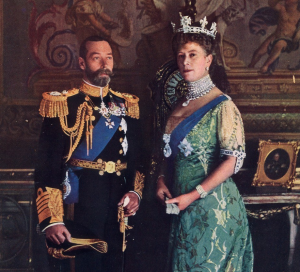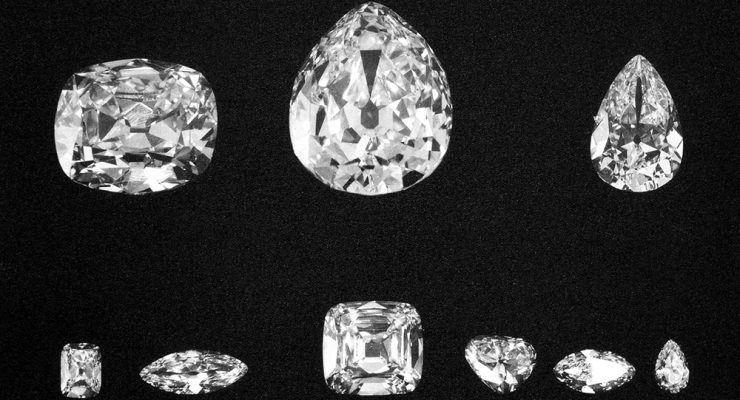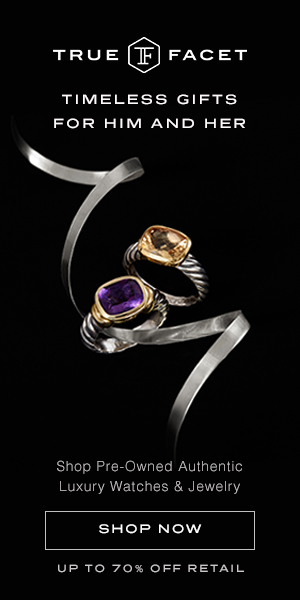Cutting the Cullinan Diamond, the Largest Rough Diamond Ever
One of the most famous diamonds in the world – and the largest ever mined – was discovered on January 6, 1905 by a mine superintendent by the name of Frederick Wells at a diamond mine in Gauteng, South Africa. Weighing in at 3,106 carats, the diamond was named the Cullinan, after the mine’s owner, Sir Thomas Cullinan. It was eventually presented to King Edward VII on November 9, 1907 for his 66th birthday.
 When it came time for the Cullinan diamond to be cut, the stone was sent to Amsterdam-based, world-renowned diamonds cutters, I.J. Asscher and Company. Just four years prior, Abraham Asscher cut the then-largest diamond – the Excelsior, weighing 997 carats – into ten stones ranging in weight from 13 to 68 carats. It was determined that, because of the positioning of the diamond’s flaws, the Excelsior could not be cut into one large stone, but rather would be best suited as several stones which could be sold to collectors.
When it came time for the Cullinan diamond to be cut, the stone was sent to Amsterdam-based, world-renowned diamonds cutters, I.J. Asscher and Company. Just four years prior, Abraham Asscher cut the then-largest diamond – the Excelsior, weighing 997 carats – into ten stones ranging in weight from 13 to 68 carats. It was determined that, because of the positioning of the diamond’s flaws, the Excelsior could not be cut into one large stone, but rather would be best suited as several stones which could be sold to collectors.
Joseph Asscher – Abraham’s brother – was given the honor of cutting the Cullinan; an honor he did not take lightly. It is said that Joseph studied the stone for months to make sure he was aware of exactly where each inclusion was positioned before he attempted to cleave the diamond. It wasn’t until February of 1908, in front of an audience that had gathered in Amsterdam to watch the famed cutter work on the most talked-about diamond in the world, that Joseph Asscher took that first step in the cutting process, but not without a misstep.
It had been decided that Joseph Asscher would cleave the Cullinan into three parts due to the positioning of the inclusions within the enormous rough diamond. Nine large stones were to be cut from the one, but upon attempting the first strike, Joseph Asscher’s blade broke, leaving him to rethink the process for the time being.

King George V and Queen Mary, wearing the Cullinan Diamonds 1, 2 and 3 and the Kohinoor Diamond
After deciding that newer, stronger tools would be needed to take on the task of cutting the Cullinan, Joseph waited a month before going back to the cutting room to finish what he’d started. The results were nine major stones (the two main stones, Cullinan I and Cullinan II, were given back to King Edward VII and both are now part of the British Crown Jewels), 96 brilliants and 9.5 carats of unpolished pieces. Upon making the first cleave, however, where the Cullinan was separated into two pieces along an internal fracture, it is said that the adrenaline running through Joseph Asscher caused the cutter to momentarily faint before inspecting his work.
The stories of Abraham and Joseph Asscher cutting the Excelsior and Cullinan diamonds are just two of the many stories of larger diamonds being cut into smaller ones, but every one of them share the same process. The rough (or raw) diamond is first examined thoroughly and under magnification in order to determine the most logical way for it to be cut. To mistakenly cut a diamond in a place where an inclusion exists is to take an expensive risk that many cutters would refuse to gamble with, especially if they’re going to be the ones responsible for the financial fallout should the owner of the stone decide it’s not what they asked for. Other factors, however, are determined by the person who owns the stone at the time of cutting. Is the owner intending on keeping the diamond for themselves? If so, is it possible to cut the diamond into one large stone? Are they looking to sell the pieces off to buyers should it be decided that more than one polished diamond can be created from the one large piece of rough? This is a critical factor particularly when it comes to famous diamonds, because an owner can earn a pretty penny by auctioning off polished stones in the future. And, like with the Asscher brothers, cutters of large rough are often vetted and researched before it’s decided that they’re the right person for the job. The last thing the owner of the stone wants is someone inexperienced when it comes to millions of dollars in diamonds.

The nine stones cut from the Cullinan Diamond
While the Cullinan remains the largest diamond ever mined to this day, there are still very large diamonds being found everywhere from African countries to Canada. I’m sure one will come along some day that will surpass even our wildest expectations, and I can’t wait to see how that stone will be cut and who will be chosen to do it.







